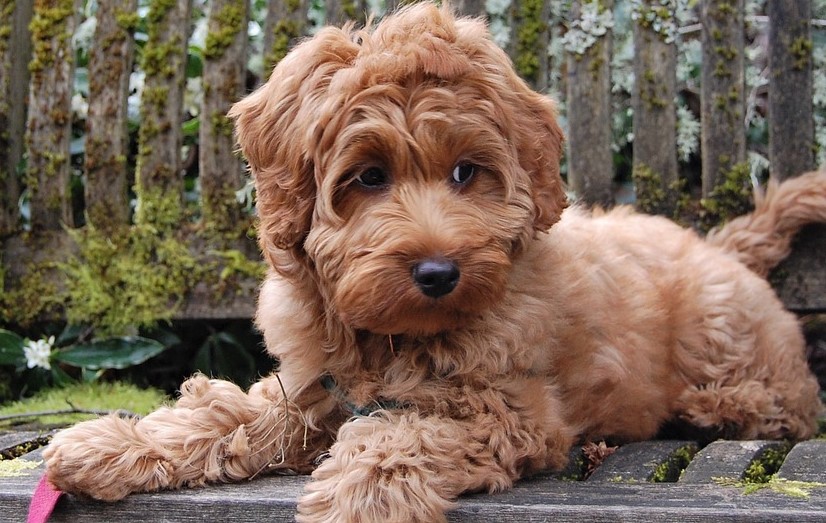The Ultimate Guide to Miniature Labradoodles
PETSIDI – Miniature Labradoodles are a popular dog breed that has become more and more common in recent years. As a mini version of the Labradoodle, which is already a hybrid of the Labrador Retriever and Poodle, the Miniature Labradoodle offers the best traits of both its parent breeds in a smaller package.
In this comprehensive guide, we’ll cover everything you need to know about Miniature Labradoodles – from their history and characteristics to finding reputable breeders, training, health considerations, and more. Whether you’re considering adding one of these adorable dogs to your family or just want to learn more about this increasingly popular designer dog breed, keep reading for the ultimate Mini Labradoodle guide!
Breed History
The Labradoodle itself was first developed in Australia in the 1980s and rose to popularity as a hypoallergenic service dog. Breeders began crossing Miniature and Toy Poodles with Labrador Retrievers to produce smaller versions that could still possess the famous Labradoodle temperament.
The result was the Miniature Labradoodle, which usually stands between 14-16 inches tall at the shoulder and weighs 15-25 pounds. They inherited their intelligence and trainability from the Poodle side and the friendly and active nature of the Labrador.
While they aren’t currently recognized by the American Kennel Club (AKC), Miniature Labradoodles are recognized by the American Canine Hybrid Club and other crossbreed registries. Like most hybrids, their popularity lies in their generally increased health compared to purebreds.
Appearance and Coat
One of the most appealing traits of Mini Labradoodles is their adorable, cuddly size. Weighing as little as 15 pounds, these mini pups are the perfect size for many owners. They have a sturdy, athletic build that is well-muscled without being bulky.
Their coat can vary quite a bit depending on which parent they take after. Generally, it is a medium-length, dense, and wavy coat reminiscent of a Poodle’s curls. Colors range from black, chocolate, gold, red, silver, and cream. Multicolored coats are also common.
Mini Labradoodles are considered to be non-shedding and hypoallergenic despite having fur rather than hair. Their coats require regular brushing and grooming every 4-6 weeks to prevent matting. Some owners choose to have their coats trimmed short for lower maintenance.
Temperament and Personality
One of the reasons Miniature Labradoodles have become so popular is their winning temperament – they are a joy to have as part of the family. Intelligent, affectionate, and energetic, they make great pets for active owners and families with children.
They are social dogs that don’t do well when left alone for long periods. Their ideal home is one with frequent company and opportunities to be included in family activities. Mini Labradoodles get along very well with children and love playing games and going for walks.
These little dogs inherited the Labrador’s love of water and are always up for splashing around. They are often used as therapy dogs due to their affectionate nature and intuition about human emotions. With good socialization and training, they get along well with other pets too.
Owners describe them as exceptionally loyal and eager to please. They are quick learners and respond very well to positive reinforcement training methods. Starting training early is recommended to prevent small dog behaviors like barking, begging, and separation anxiety.

Exercise and Activity Needs
While their small size makes them suited for apartment living, Mini Labradoodles still need a moderate amount of daily activity. Plan on providing at least 30-60 minutes of exercise each day. They love going for walks, playing fetch, learning new tricks, and splashing around bodies of water.
Mental stimulation is just as important as physical exercise for this intelligent hybrid. Interactive toys, training sessions, and including them in your daily activities keep their mind engaged. Puzzles and treat-dispensing toys are great for independent play.
A Mini Labradoodle would not be content spending most of their time alone at home or in a yard by themselves. They thrive when they can be close to their owners and involved in all aspects of family life. The small size does mean they adapt well to homes of any size.
Training Tips
Mini Labradoodles are bred to be exceptionally intelligent and obedient dogs. They pick up on training quickly, especially when it involves positive reinforcement methods. It’s important to start socialization and training early while they are still impressionable puppies.
Obedience training is recommended starting from 12 weeks old. Mini Labradoodles do very well at agility, rally, and other canine sports too.
Keep training sessions short and engaging. Practice basic cues like sit, stay, come, down, and heel. Work up to more advanced tricks over time.
Never use harsh corrections – this sensitive breed shuts down when treated harshly. Reward wanted behaviors and ignore unwanted ones. With their aim to please, they will catch on quickly.
Proper socialization involves introducing your Mini Labradoodle puppy to a wide variety of people, pets, places, sights, and sounds. Start slowly and associate each new experience with rewards and praise. A well-socialized Mini Labradoodle will grow into a friendly and confident adult.
Housetraining is easier than most breeds – these intelligent dogs want to please their owners. Use a consistent schedule and positive reinforcement to speed up the process. Crate training helps.
Training, socializing, and exercising your Mini Labradoodle pup will strengthen your bond and prevent problem behaviors. Their eagerness to learn makes it a fun process for both dog and owner!

Grooming Requirements
One consideration with Miniature Labradoodles is their grooming needs. Their coats are dense and prone to matting without regular upkeep. Plan to brush them thoroughly 2-3 times per week to prevent painful mats from forming close to the skin.
Most owners have their Mini Labradoodles clipped every 6-8 weeks by professional groomers. A “puppy clip” with shorter hair is lower maintenance than leaving the coat full length. Bathing can be done every few weeks using a mild dog shampoo.
Other routine grooming tasks include nail trimming, ear cleaning, tooth brushing, and checking their skin for any abnormalities. Since their facial hair grows continuously it may need occasional trimming as well.
While considered to be non-shedding, Mini Labradoodles do lose some hair. Those with dog allergies should spend time around one before committing to ownership. No dog is completely non-allergenic.
Many owners report their Mini Labradoodles require less grooming than purebred Poodles. Find a groomer experienced with this mix, and commit to keeping up with their unique grooming needs.
Health Considerations
One of the benefits of crossing two pure breeds is hybrid vigor – mixed breeds are generally healthier than their purebred parents. Miniature Labradoodles enjoy good overall health, especially when purchased from reputable breeders.
That said, there are some health conditions they can be prone to:
- Hip Dysplasia – Malformation of the hip joint. Can cause arthritis and lameness. Select breeders who test parent dogs.
- Eye Problems – Mini Labradoodles can develop progressive retinal atrophy, cataracts, and other eye diseases. Veterinary eye exams are recommended annually.
- Allergies – Inhalant or food allergies are fairly common. Symptoms include itchy skin, ear infections, and digestive issues.
A well-bred Mini Labradoodle from health-tested parents should enjoy a long lifespan of 12-14 years. Find a vet familiar with the breed for routine care and early detection of any issues.
Finding a Mini Labradoodle Puppy
High demand for Miniature Labradoodles means finding a pup can take some time and effort. Never support irresponsible backyard breeders or puppy mills just to get one quickly. Here are some tips for finding a healthy, well-bred Mini Labradoodle pup:
- Research breeders thoroughly and ask for referrals. Look for those involved in breed clubs and organizations. Meet both parent’s dogs if possible.
- Responsible breeders do extensive health testing on their breeding dogs to reduce the risk of hereditary issues. Expect documentation.
- A good breeder will ask you questions too, to ensure their pups go to lifelong, prepared homes. There may be a waiting list.
- Estimate $2000-$3500 for a Mini Labradoodle puppy depending on pedigree and location.
- Visit the breeder’s facilities – they should be clean, and spacious, and allow puppies to be raised underfoot and well-socialized.
- The breeder should provide health records, microchipping, deworming, shots, and sometimes early training. They should offer support for the puppy’s lifetime.
- Be wary of breeders who have many litters available or who ship puppies. Meet puppies on-site before bringing one home.
Finding a responsible Mini Labradoodle breeder is well worth the effort and wait! Choosing a healthy, well-bred puppy will lead to years of companionship with your new furry family member.
Bringing Your Mini Labradoodle Home
Preparing for a new puppy takes some planning and effort. Here are some tips to make the transition smooth:
- Puppy-proof your home by removing unsafe objects, securing chemicals, covering wires, and blocking off unsafe areas.
- Have a crate, food/water bowls, collar, leash, toys, bed, and other supplies ready well in advance.
- Child-proof as well if you have little ones. Teach children how to properly interact with a new puppy before their arrival.
- Read up on positive reinforcement housetraining and crate training techniques. Consistency is key.
- Find a trusted vet and schedule the puppy’s first visit within a few days of arrival. Keep up with all vaccinations.
- Plan to take time off work or arrange care for the first couple of weeks. Puppies need constant supervision.
- Set up areas like an exercise pen where your pup can play safely when you are unable to directly supervise.
- Start socialization and training right away. Expose your Mini Labradoodle to new sights, sounds, people, and experiences positively.
Bringing home your Mini Labradoodle is exciting – with the right preparation, you’ll be off to a great start together!

Mini Labradoodle Life Stages
Like all dogs, Miniature Labradoodles change and mature as they progress from puppyhood to adulthood. Here is what to expect at each life stage:
Puppy (8 weeks – 1 year)
This is when rapid socialization, training, and bonding occur. Puppies need near-constant supervision. Arrange care for when you can’t watch them. Housetraining, crate training, and enrollment in a puppy kindergarten class are essential. Feed them 3-4 small meals per day of high-quality puppy food. Vet visits start for vaccinations – critical to protect puppy health. Lots of playtime, walks, training, and love help the two of you bond strongly. Enjoy this rewarding but exhausting stage!
Adolescent (1 – 3 years)
Your Mini Labradoodle is maturing both physically and mentally. Their full adult size, weight, and coat will develop. Adolescence can bring some challenging behaviors as your pup tests boundaries. Stay consistent with training and socialization. Daily walks, play sessions, training classes, and puzzles keep them engaged. Feed twice per day and transition to adult dog food. Neuter or spay your Mini Labradoodle by age 1-2 years for health benefits. Annual vet visits monitor emerging health issues like allergies or joint problems. Participate in canine activities you both enjoy together.
Adult (3 – 8 years)
Your Mini Labradoodle reaches full maturity around age 3. Their personality is now well-established. Watch weight, provide enriching activities daily, and continue training. Adult Mini Labradoodles thrive on being active members of the family. Upgrade their toys and puzzles for mental stimulation. Feed a high-quality adult dog food. Annual vet exams with bloodwork and dental cleaning keep them healthy. Supplement their diet with omega fatty acids for skin and coat health. Enjoy this period where your bond is strong and your Mini Labradoodle is at their prime.
Senior (8 years +)
Mini Labradoodles enter their golden years! Monitor them closely for any signs of declining health and mobility. Increase vet visits to twice yearly, with bloodwork to catch issues early. Their dietary needs change – feed high-quality senior dog food. Keep their mind active with gentle exercise, training, joint supplements, and puzzles. Accommodate any physical limitations they develop while still encouraging activity. Shower your aging Mini Labradoodle with love and care – the bond you share is precious. This slower stage can last for years with proper care.
Gaining an understanding of the Miniature Labradoodle’s lifespan and stages allows you to better anticipate their needs at each phase. With responsible ownership, your small but mighty companion can remain healthy, engaged, and loving throughout their senior years.
Finding a Mini Labradoodle Breeder
As Miniature Labradoodles grow in popularity, finding a responsible breeder becomes more challenging. Take your time researching potential breeders, and be prepared to wait for the right litter. Here’s what to look for:
Experience
Seek out established breeders with a long history of breeding Mini Labradoodles. They should be deeply knowledgeable about the breed’s health, genetics, and conformational standards. Experienced breeders already have a breeding program in place focused on improving the breed.
Purpose
Responsible Mini Labradoodle breeders are not in it for profit. Good breeders aim to better the breed and place their puppies in loving homes. They will want to learn about you to ensure it’s a good match. Avoid breeders who appear commercial.
Facilities
The breeder’s facilities should allow puppies to be well-socialized and exposed to household activities and people. They should be very clean, and roomy and simulate a nurturing home environment. Meet the puppies on-site.
Health testing
Reputable breeders complete extensive genetic health screening on their breeding dogs. Mini Labradoodle puppies should come with documentation of parent health certifications for issues like hip dysplasia, eye anomalies, and cardiac problems.
Support
The ideal Mini Labradoodle breeder offers guidance and support to new owners for the lifetime of the dog. They have a take-back policy if you ever cannot care for the dog. An ethical, responsible breeder wants what is best for their puppies!
While finding a breeder like this takes effort and patience, it is incredibly worthwhile to get a happy, healthy Mini Labradoodle that will be with your family for years to come. Take your time researching breeders, and remember – quality over speed!
Daily Life with a Mini Labradoodle
Deciding if a Miniature Labradoodle is right for your lifestyle is an important consideration. Here is an inside look at what living with one of these lively little dogs is like.
Exercise
Plan to provide your Mini Labradoodle with 45-60 minutes of activity daily. Mini Labradoodles enjoy brisk walks, playing fetch, swimming, learning tricks, and joining their owner on outings. A bored Mini Labradoodle can become destructive. Mental stimulation is just as important as physical exercise.
Grooming
Mini Labradoodle coats are high-maintenance. Schedule professional grooming every 6-8 weeks. At home, plan to brush them thoroughly 2-3 times per week. Trim nails monthly. Check and wipe ears weekly. Committing to their grooming routine prevents painful mats.
Training
Early socialization and positive reinforcement training are strongly recommended for Mini Labradoodles. They thrive on mental stimulation and interaction with their owner. Ongoing “brush up” training provides this. Mini Labradoodles excel at dog sports like agility, rally, and obedience.
Feeding
These energetic small dogs need high-quality food. Feed Mini Labradoodle puppies 3-4 times daily, switching to twice daily feedings of 1/2 – 1 cup once mature. Cater to your individual dog’s needs – some are voracious, others picky. Avoid overfeeding treats.
Family Life
Mini Labradoodles need to feel like part of the family. They don’t do well when left alone for long work days. Arrange a pet sitter, or doggy daycare, or bring them to work if possible. They love playtime and activities with kids and get along well with other pets when socialized.
Life with a Mini Labradoodle can be very rewarding for an active owner able to provide what they need to thrive. When properly exercised, stimulated, and cared for, they make an outgoing, affectionate addition to the family.
Is a Miniature Labradoodle Right for Me?
Deciding whether a Mini Labradoodle is the right dog breed for you requires some honest consideration. While their small size makes them suited to any home, they do have some specific needs. Here are a few key questions to ask yourself:
- Activity Level – Can I commit to providing 45-60 minutes of daily physical and mental exercise? Mini Labradoodles thrive when active.
- Grooming – Am I able to maintain the grooming requirements of this breed? Their coat needs regular brushing and professional grooming.
- Training – Will I commit to early socialization and training classes? This is key to living in harmony with your miniature Labradoodle.
- Companionship – Is my home lively enough for this highly social breed? Mini Labradoodles don’t do well when left alone for long periods.
- Children – Do I have time to properly supervise interactions between children and a new puppy? Mini Labradoodles can make great family dogs.
- Expenses – Can I afford the purchase price, medical costs, insurance, grooming, and quality food? Mini Labradoodles have an average lifespan of 12-14 years.
- Allergies– Does any family member have severe dog allergies? No breed is 100% hypoallergenic, so spend time with one first.
If you can meet the needs of a Mini Labradoodle and provide a loving home, they make a friendly and rewarding pet. Their intelligence and trainability make them a joy to own.
Thinking through these considerations carefully makes sure a Miniature Labradoodle is the right dog breed for your lifestyle.
Miniature Labradoodle FAQs
Here are answers to some of the most frequently asked questions about Mini Labradoodles:
How big do Miniature Labradoodles get?
Mini Labradoodles average 14-17 inches tall at the shoulder and 15-25 pounds. The smallest are under 16 inches and 15 pounds. They are considered a small dog breed.
Do Miniature Labradoodles shed?
Mini Labradoodles are considered low- to non-shedding. They have hair rather than fur which means less shedding. However, no dog is 100% non-shedding. Those with allergies should spend time around one before choosing this breed.
Are Miniature Labradoodles yappy?
Mini Labradoodles can be prone to barking and separation anxiety. Early socialization and helping help prevent nuisance barking behaviors. Some yapping is to be expected with small dog breeds.
Do Mini Labradoodles get along with cats?
Properly socialized Mini Labradoodles can get along very well with cats and other household pets. Early positive exposure to cats and supervision is recommended to prevent problematic chasing or rough play.
Are Miniature Labradoodles easy to train?
Yes! Mini Labradoodles are bred specifically for their trainability and eagerness to please owners. They respond very well to positive reinforcement training starting early. Their intelligence makes them quick learners.
How much exercise does a Mini Labradoodle need?
Plan to provide 45-60 minutes of daily activity for a Mini Labradoodle. Physical exercise like walks plus mental stimulation through training, play, and puzzle toys. They adapt well to the activity levels of their owner.
What health problems do Miniature Labradoodles have?
Some potential health issues to be aware of are hip and elbow dysplasia, progressive retinal atrophy, luxating patellas, and allergies. Buying from a breeder who tests breeding dogs helps minimize risk.
Are Miniature Labradoodles good family dogs?
Yes! When properly trained and socialized, Mini Labradoodles make exceptional family companions. They are gentle and playful with children and love being active parts of the household. Supervision of small children is still required.
How long do Miniature Labradoodles live?
The average Mini Labradoodle lifespan is 12-14 years. Buying from a responsible breeder and providing excellent care helps maximize their longevity. Some Mini Labradoodles live into their mid-teens.
The Takeaway
For an intelligent, friendly small dog breed that plays well with kids, gets along with other pets, and serves well as a devoted companion, the Miniature Labradoodle has a lot to offer the right owner. When purchased from a reputable source and properly cared for, they make lively and loving family dogs.
With their stunning coats, cute faces, cuddly size, and winning personalities, it’s no wonder Mini Labradoodles have quickly become a popular hybrid breed. Just be sure you can provide the time, energy, and commitment your Mini Labradoodle needs to thrive in return. When matched with caring owners able to meet their needs for exercise, training, grooming, and companionship, the Mini Labradoodle is sure to bring many years of joy and fun to any home.



Leave a Reply